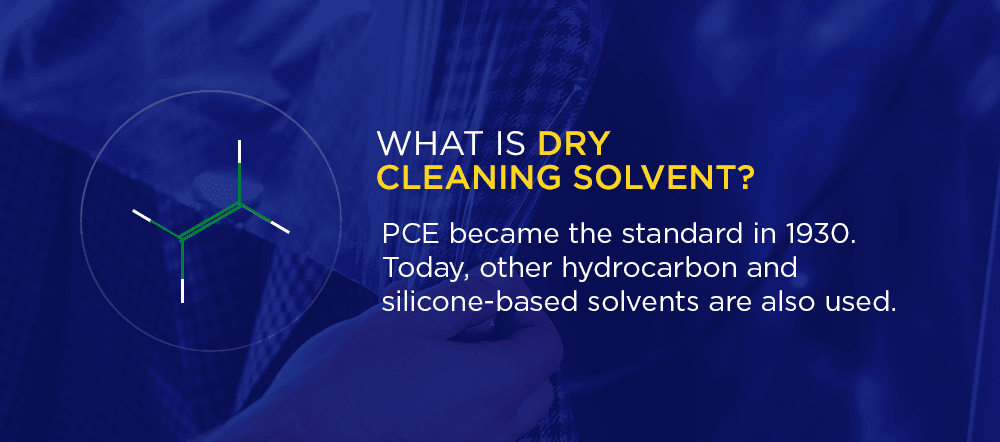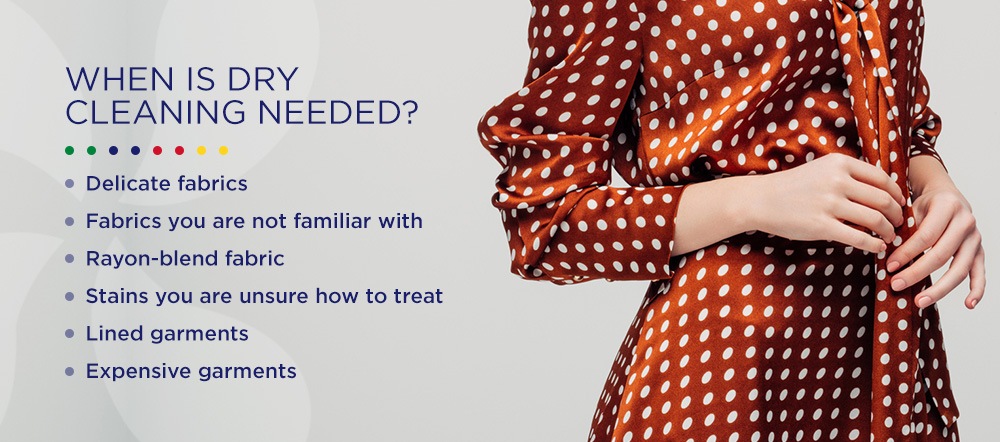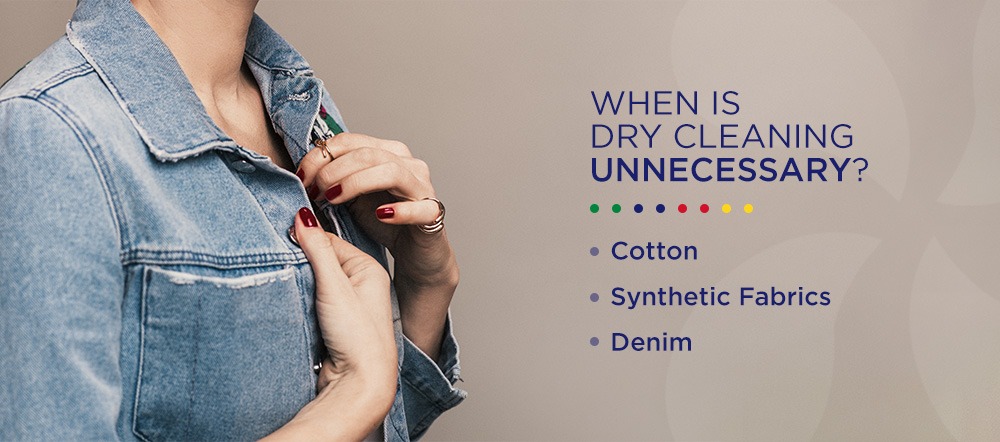
Understanding Dry Cleaning: How Does It Work?
When we think about washing our clothes, water usually comes to mind. So, how can cleaning clothes be a “dry” process? What does dry cleaning mean? What is the dry cleaning process, and how exactly does it work? Understanding the answers to these questions highlights the importance of proper fabric and garment care.
Dry cleaning is a modern convenience that uses liquid solvents instead of water to clean clothes. This method is especially useful for delicate fabrics that can be damaged by traditional washing. Professional dry cleaning helps preserve your belongings and saves you time, stress, and money.
What Is Dry Cleaning?
Despite its name, dry cleaning is not a “dry” process. A more accurate term would be “water-free” cleaning. Dry cleaners do use liquids—specifically, heated hydrocarbon solvents—to clean fabrics. They simply don’t use water, as you would in a home washing machine. In a professional facility, a dry cleaner places your fabric item into a dry cleaning machine designed for various items, including delicate fabrics.
Once inside the machine, your item is exposed to the liquid solvent, which recirculates through filters throughout the cleaning process. The solvent is then distilled and completely purified before reuse. After cleaning, the dry cleaner removes your item from the machine. In the final step, the item is typically steamed and pressed, ensuring it is wrinkle-free, stain-free, and ready for use.
Water-based laundry methods, like washing machines, cause fabric fibers to swell, which can lead to shrinkage, color loss, and misshapen clothing. By using liquid solvents instead of water, professional dry cleaners preserve the quality and integrity of delicate fabrics such as silk, velvet, wool, leather, and cashmere. Additionally, many common stains are caused by grease and oil. Since oil is insoluble in water, these stains often do not respond well to water-based removal processes. Dry cleaning fluids, on the other hand, are much more effective at removing these types of stains.
The Professional Dry Cleaning Process

Most professional dry cleaners follow a thoughtful, multi-step process to ensure the utmost care and consideration for your belongings. While the specifics may vary from cleaner to cleaner, the industry standards typically include the following steps:
1. Drop Off
First, you need to drop off your items at the dry cleaner or use their free pickup and delivery service. If there are specific stains on your clothes, mark them using pins or tape, and provide a list of stains for the dry cleaners. Always check and empty pockets before dropping off your items.
2. Inspection
Dry cleaning employees will inspect each item by hand before starting the cleaning process. They will note any stains that need special attention and identify any pre-existing damages, such as missing buttons or broken zippers.
3. Pre-Treatment or Spot Treatment
During pre-treatment, the dry cleaner will apply a stain removal agent or use a steam gun to address any pre-existing stains. These may be stains you have identified or ones the dry cleaner found during the inspection.
4. Dry Cleaning
Modern dry cleaners use state-of-the-art, computer-controlled machines for a water-free cleaning process safe for most delicate fabrics. The dry cleaning solvent, which lifts stains and surface dirt, is cycled through filters to ensure it is purified and distilled before reuse.
5. Post Spot Treatment
After cleaning, the items are inspected again for any persistent stains, which are then treated. Post-spotting addresses any remaining water-based stains, as the dry cleaning process effectively removes grease stains. This step requires professional equipment and expertise.
6. Finishing
The final step involves a thorough inspection of your items. They are steamed, ironed, and pressed to ensure they are ready for use. To protect your items during transport, they are typically wrapped in plastic garment bags. However, it’s important to remove these plastic bags as soon as possible to prevent trapped moisture and undesirable odors.
By following this meticulous process, professional dry cleaners help preserve the quality and integrity of your garments, ensuring they look their best every time.
What Is Dry Cleaning Solvent?
Dry cleaning solvents, also known as dry cleaning fluids, are liquids used to clean fabrics without water. These solvents have been a crucial part of dry cleaning since the beginning.
Historical Background
The first dry cleaning patent was granted to Thomas Jennings, an American tailor, in 1821 for a process called “dry scouring,” which was an early form of dry cleaning. Unfortunately, the details of Jennings’ method are lost to history.
In 1855, Jean Baptiste Jolly, a Frenchman, discovered that kerosene could clean tablecloths effectively. He started a fabric cleaning service and called it “dry cleaning.” For many years, kerosene and gasoline were commonly used as solvents until safer options were developed in the 20th century.
Modern Solvents
In the 1930s, perchlorethylene (often shortened to “perc” or PCE) became the standard solvent for dry cleaning due to its effectiveness and stability. However, due to environmental and health concerns, most dry cleaners have moved away from using PCE.
Today, dry cleaners use safer alternatives such as:
- Heated Hydrocarbon Solvents: These are milder than PCE and work well on delicate fabrics.
- Silicone-Based Solvents: These are gentle on fabrics and environmentally friendly.
These modern solvents ensure effective cleaning while being safer for both the environment and the fabrics.

When Is Dry Cleaning Needed?
How often you should dry clean depends on several factors, including your clothing style, fabric types, lifestyle, and local climate. Thankfully, most clothes have tags with fabric content and care instructions. While these tags are a helpful starting point, they may not always be completely accurate.
Since many clothes are significant financial investments and cherished wardrobe staples, you might not want to risk at-home spot treatments or regular laundry. To decide if dry cleaning is the best option, consider these questions. If you answer “yes” to any, dry cleaning might be the way to go. When in doubt, consult a dry cleaning professional.
Questions to Consider
- Is the fabric delicate or costly?
- Does the garment have special finishes like pleats or beading?
- Are there stubborn stains or odors that home washing can’t remove?
- Does the care label recommend dry cleaning?
Considering these questions can help you determine if dry cleaning is necessary for your garments.

Deciding whether to dry clean your garments can depend on a variety of factors. Here are some key considerations to help you make the best choice:
- Delicate Fabrics
Is your item made of delicate fabrics such as silk, velvet, suede, leather, wool, or cashmere? Laundering these fabrics at home can result in color loss, pilling, shrinkage, or other damage. - Unfamiliar Fibers
Is your item made of a fiber you’re not familiar with or have never cleaned before? If so, you might not want to risk home laundering unfamiliar items. - Rayon or Rayon Blends
Is your item made of rayon or a rayon-blend fabric? Rayon can be hand-washable but is prone to shrinkage when exposed to water. - Stubborn Stains
Does your item have stains that you’re unsure how to treat, especially oil or grease-based stains? Water won’t lift these stains, so dry cleaning is likely your best option. - Lined Garments
Is your garment lined? Often, linings are made of different fabrics than the outer layer, and home washing can result in mismatched and misshapen layers. - Difficult to Iron Items
Is the item difficult to iron due to pleats, pintucks, or other details? Home washing can make it difficult to get these items to lay the same again. - Sentimental or Expensive Items
Does the item hold special sentimental value or was it particularly expensive? If washing at home could potentially shrink or damage it, it’s worth taking it to the dry cleaners.
If your garment meets any of these descriptions, consider using a dry cleaner. Many dry cleaners offer convenient pick-up and drop-off services, making the process simple and hassle-free.
When Is Dry Cleaning Unnecessary?
Most everyday items do not require dry cleaning or special care. In fact, cotton — one of the most common fabrics for clothing — typically doesn’t need to be dry cleaned and can be easily cared for at home. Similarly, most synthetic fabrics like polyester, nylon, and spandex are durable enough to be washed in a regular washing machine or at the laundromat. This makes caring for your everyday wardrobe simple and convenient.

Cotton
Most cotton items are easy to care for. Wash them in cold water with similar colors. Today, cotton is generally “pre-shrunk,” so you can tumble dry on a low heat setting. If you’re worried about shrinkage, line dry your cotton items after washing.
Synthetic Fabrics
Most synthetic and synthetic-blend garments can be washed at home. Follow the care instructions on the tags. If you’re unsure, use a delicate, cold-water cycle and a low-heat tumble dry.
Denim
Denim, used in jeans, jackets, and skirts, is very durable. Because jeans are so popular, knowing how to care for them is essential. Wash denim immediately if it’s stained, dirty, smelly, or if you’ve been sweating in it.
What Items Can’t Be Dry Cleaned?
Some fabrics can’t handle the strength of dry cleaning solvents like PCE. Plastic-based fabrics such as PVC, polyurethane, and neoprene should never be dry cleaned as they can be seriously damaged. Similarly, fragile fibers like raffia and straw can’t endure these solvents. Spot clean these items with a gentle washcloth. For specific questions, always consult a professional dry cleaner you trust.
Trust Takeitclean Drycleaners for Your Dry Cleaning
The more you learn about the history and practice of dry cleaning, the more you’ll appreciate this valuable professional service. While we often think of dry cleaning for specific clothing items, it’s also effective for many fabric items like bed linens, tablecloths, napkins, and other home textiles.
Professional dry cleaners offer a variety of services to save you time, stress, and money, such as wash and fold service, specialized leather care, and professional tailoring. Given our busy lives, many cleaners now offer pickup and delivery services for added convenience. Explore our full list of services and contact us anytime.

